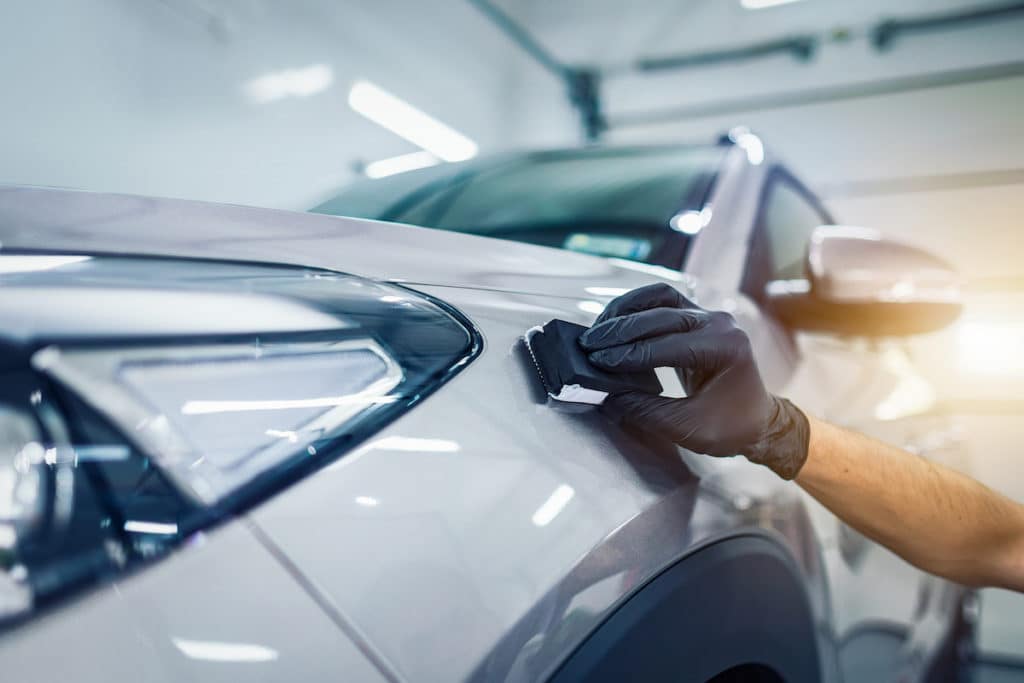Frequently Asked Questions Regarding Ceramic Coating Philadelphia Services Answered
Frequently Asked Questions Regarding Ceramic Coating Philadelphia Services Answered
Blog Article
Why Ceramic Coating Is the Ultimate Remedy for a Perfect End Up
Ceramic finish has become a leading solution for those seeking a remarkable finish for their vehicles, many thanks to its amazing sturdiness and protective attributes. This innovative fluid polymer not just bonds effortlessly with manufacturing facility paint but additionally provides a formidable obstacle against usual threats such as scratches, UV rays, and environmental toxins. Its hydrophobic residential properties simplify maintenance while enhancing aesthetic allure. Understanding just how this modern technology compares to standard methods and discovering its application nuances can reveal even a lot more regarding its value. What elements absolutely established ceramic finish apart?
What Is Ceramic Layer?

When applied correctly, ceramic coating creates a hydrophobic surface area that repels water and dust, making it simpler to clean and maintain. Unlike conventional waxes or sealers, which commonly use temporary protection, ceramic coverings can last for numerous years, relying on the item quality and application approach. The procedure of using ceramic layer calls for precise prep work, consisting of complete cleaning and often repaint improvement, to guarantee optimal bonding and effectiveness.
Ceramic coverings are not restricted to auto surfaces; they can likewise be utilized on different materials, consisting of glass, steel, and plastics, giving a versatile remedy for enhancing security. Overall, ceramic layer stands for a significant development in surface protection technology, incorporating both practical and aesthetic benefits for a large range of applications.
Benefits of Ceramic Finishing
While numerous surface area defense alternatives exist, the benefits of ceramic layer attract attention because of its special residential or commercial properties and long-lasting efficiency. One of the primary benefits is its remarkable durability. Ceramic Coating Philadelphia. Unlike traditional wax or sealers that need constant reapplication, ceramic coatings offer a durable layer that can last for a number of years, substantially reducing upkeep initiatives
One more notable benefit is enhanced protection against environmental impurities. Ceramic coverings produce a hydrophobic surface area that wards off water, dirt, and various toxins, making it much easier to cleanse. This feature not just maintains the lorry's look but additionally lessens the danger of deterioration and oxidation, particularly in extreme weather.
Furthermore, ceramic finishes supply exceptional resistance to UV rays, protecting against fading and destruction of paint gradually. This UV protection is vital for keeping the aesthetic value of vehicles and surfaces revealed to route sunshine.
Additionally, the glossy coating accomplished with ceramic finish improves the overall aesthetic appeal, providing surfaces a showroom-quality shine. Overall, ceramic layers stand for a substantial development in surface area defense modern technology, offering long-lasting advantages that deal with both aesthetic and useful requirements.
Just How It Functions
Understanding the scientific research behind ceramic coverings discloses just how they give such impressive protection and long life. At its core, a ceramic covering is a liquid polymer that chemically bonds with the vehicle's manufacturing facility paint.
The application procedure includes multiple steps, including surface preparation, which is important to accomplishing optimal attachment. Once used, the layer goes through a treating process, throughout which it solidifies and develops a semi-permanent bond with the paint surface area. This bond is what distinguishes ceramic coatings from traditional waxes and sealers, supplying a longer-lasting protective barrier that can withstand for years.
Furthermore, the thickness of the coating can enhance its protective click for info high qualities, making sure that it can stand up to rough conditions. Ultimately, the scientific research of ceramic finishes combines innovative materials with cutting-edge application methods to provide an unmatched level of protection and visual improvement for automobiles.
Contrast With Traditional Techniques
When contrasted to standard paint defense techniques such as sealers and waxes,The advantages of ceramic finishings become specifically evident. While waxes provide a temporary sparkle, normally lasting a few weeks additional reading to a couple of months, ceramic layers supply a lasting safety layer that can sustain for several years. This longevity substantially decreases the regularity of reapplication, making ceramic coatings a much more cost-efficient option over time.
Furthermore, traditional techniques commonly call for considerable prep work and multiple applications to attain an adequate degree of protection. On the other hand, ceramic coatings bond at a molecular level with the lorry's surface area, producing a durable shield versus environmental pollutants like UV rays, acid rain, and roadway salts. This bond improves the lorry's resistance to scrapes and swirl marks, which are prevalent with standard waxes and sealants.
Moreover, the hydrophobic homes of ceramic coatings fend off water and dust, resulting in easier cleaning and maintenance. On the other hand, wax and sealant-treated surface areas can bring in grime, demanding more frequent washing - Ceramic Coating Philadelphia. In general, ceramic finishes not just provide remarkable defense yet additionally provide a more visually appealing and long-lasting surface, developing them as the favored selection for critical lorry proprietors
Application and Upkeep Tips

Using a foam applicator, use the finish in tiny areas, adhering to the manufacturer's standards relating to density and overlap. Allow sufficient treating time in between coats, commonly 24 hours, to ensure proper bonding. After application, it is essential to avoid direct exposure to water or harsh components for at least a week to permit the coating to completely heal.
For maintenance, wash the automobile consistently with pH-balanced soaps and stay clear of unpleasant materials. Touchless auto washes are suggested to lessen scraping. Furthermore, using a ceramic maintenance spray can boost the layer's hydrophobic residential properties and long life. Regular evaluations for any kind of indicators of wear will aid keep the layer's stability and preserve that immaculate surface.
Conclusion
In final thought, ceramic covering arises as a premium alternative for attaining a remarkable auto finish. By forming a durable bond with manufacturing facility paint, ceramic coating properly guards versus scratches, UV rays, and ecological contaminants.

Report this page